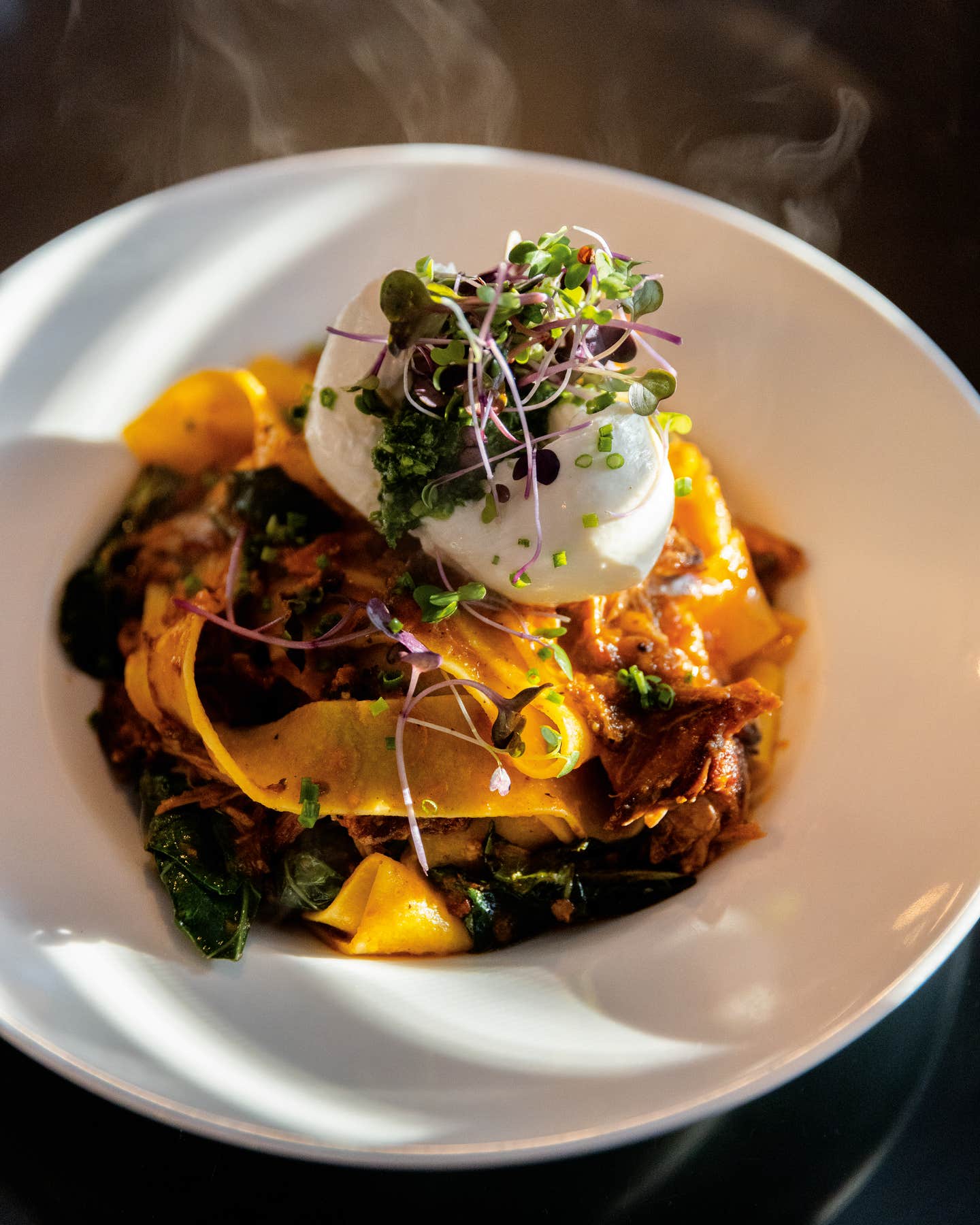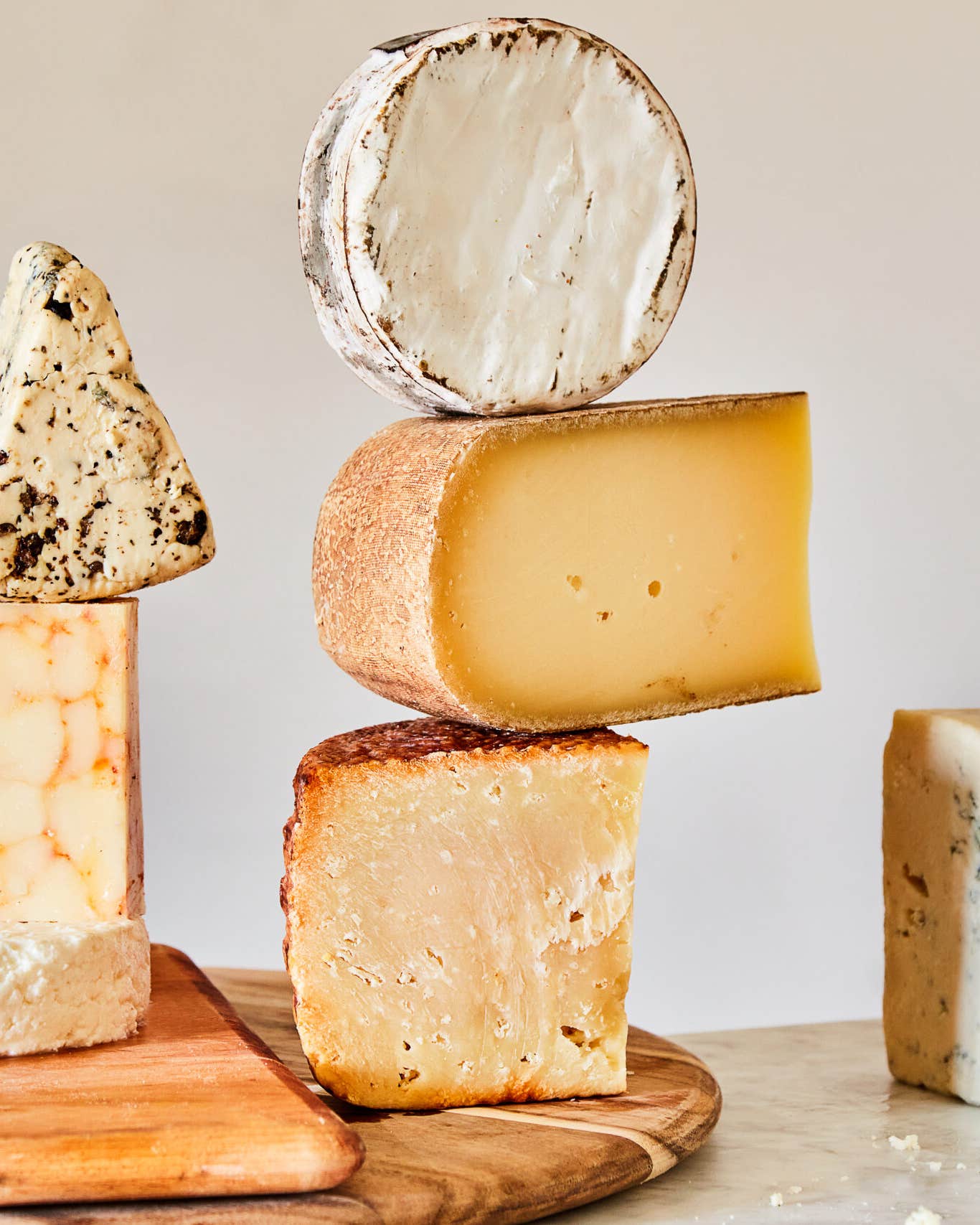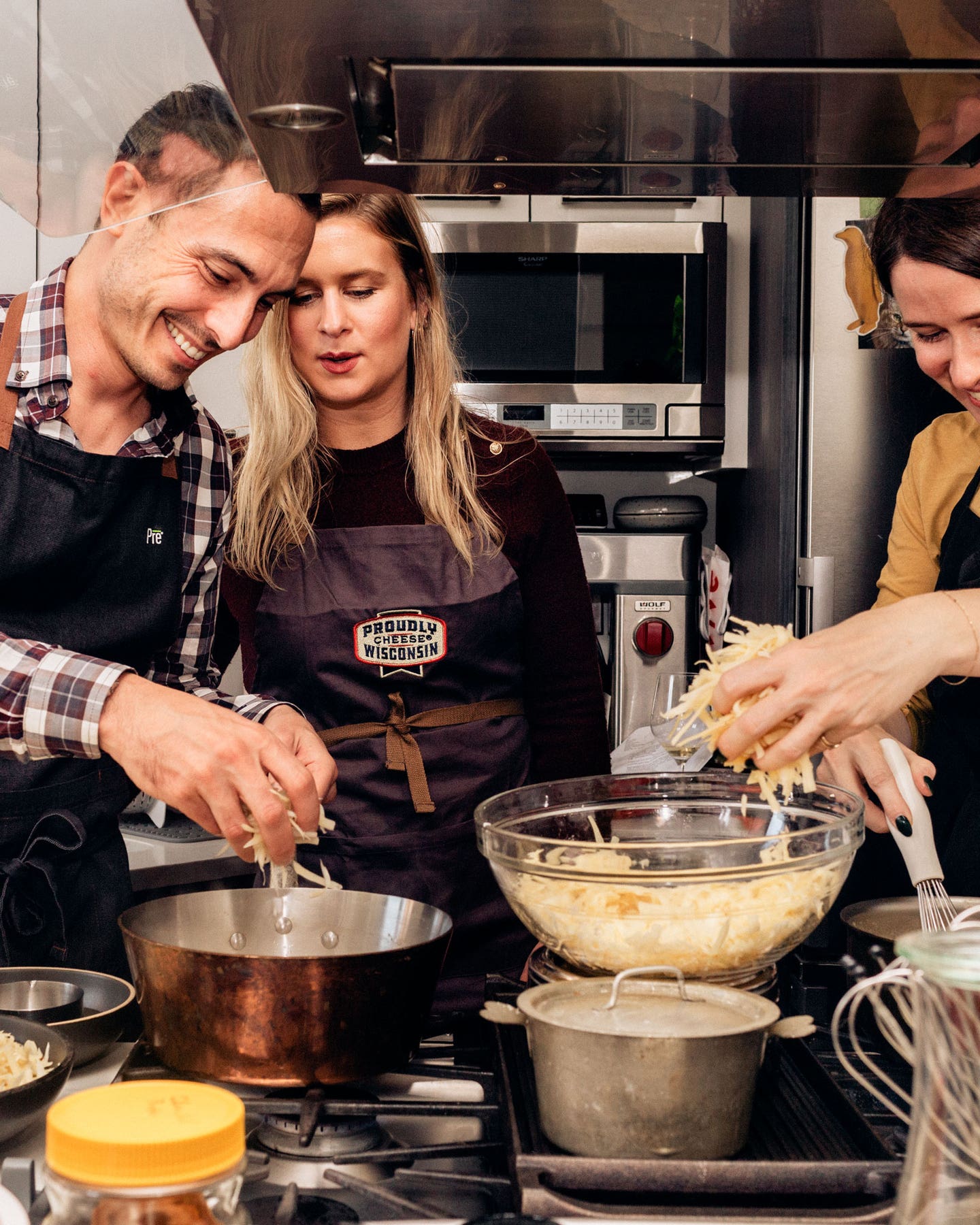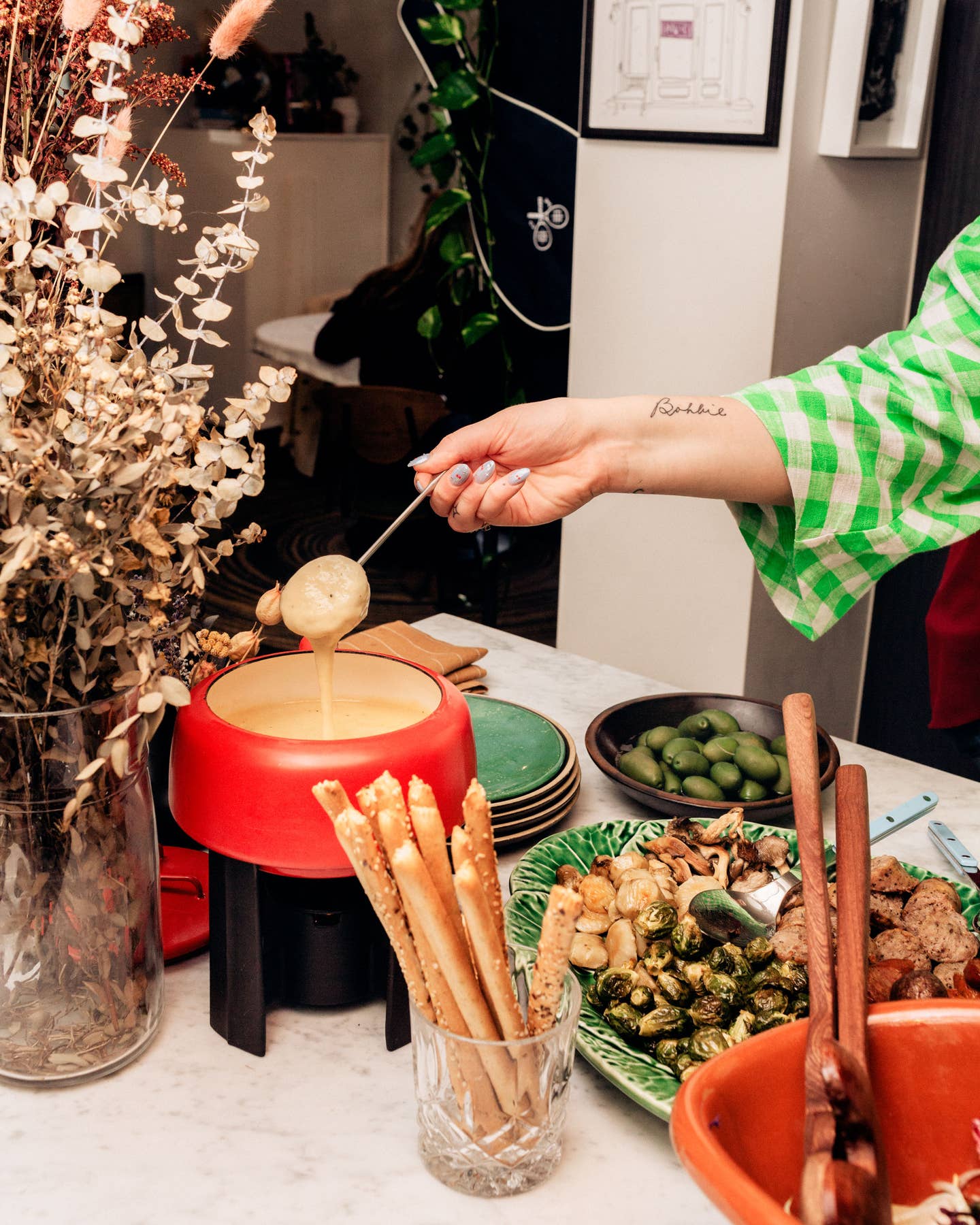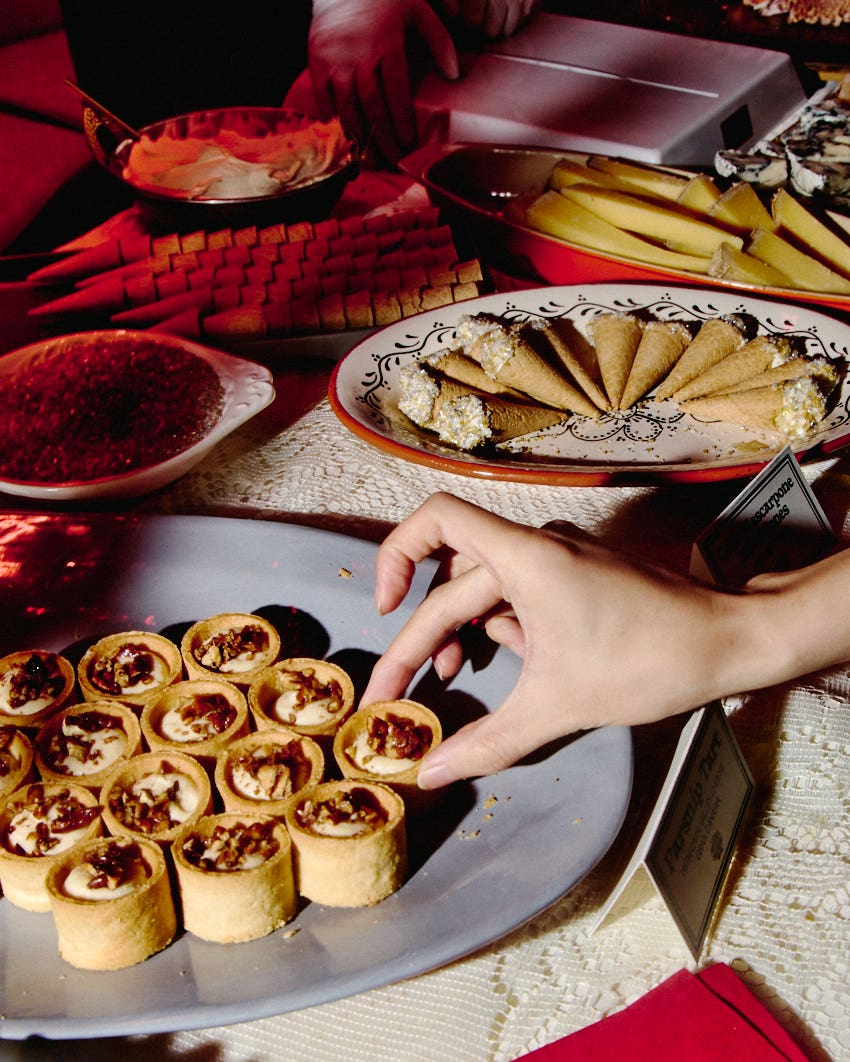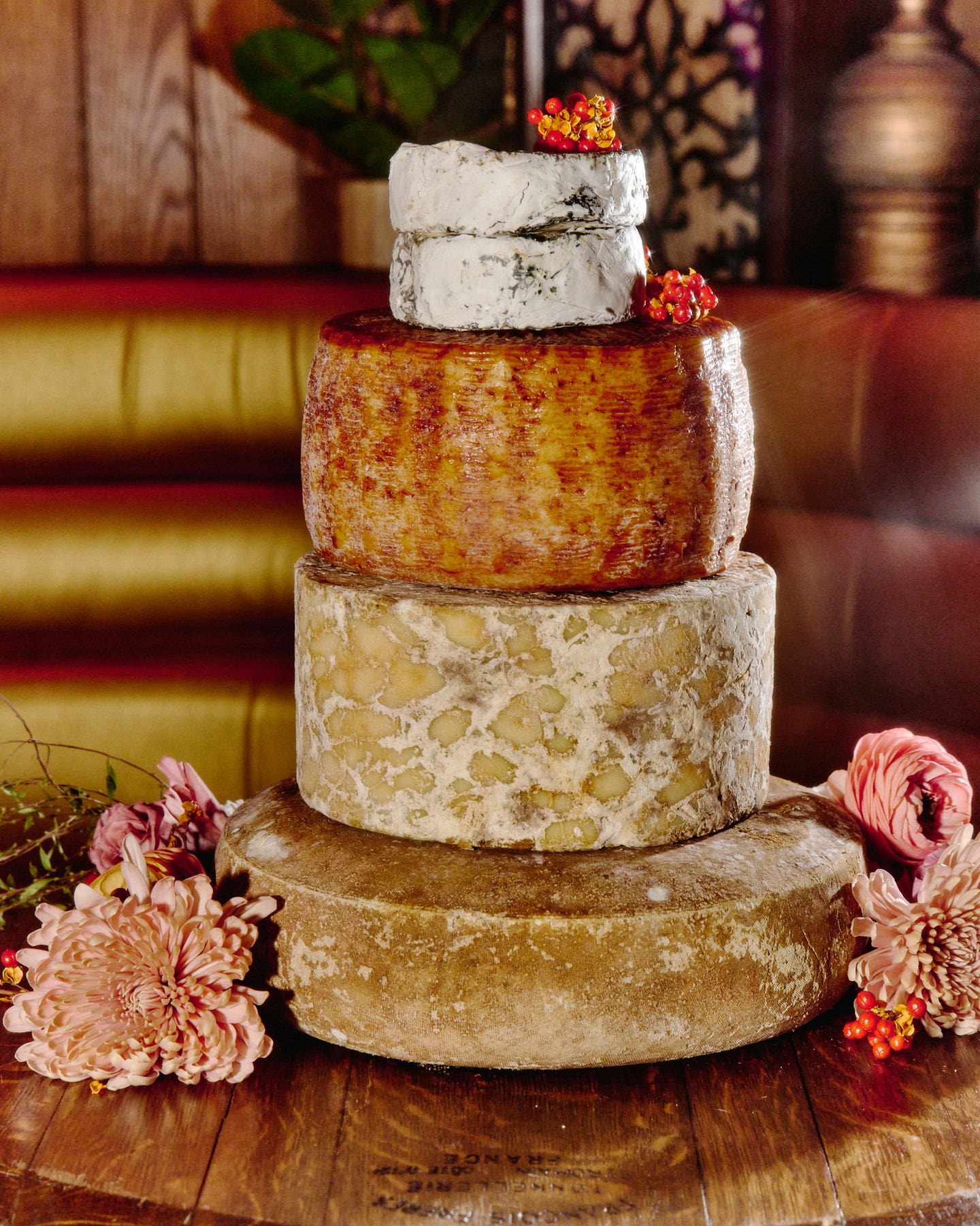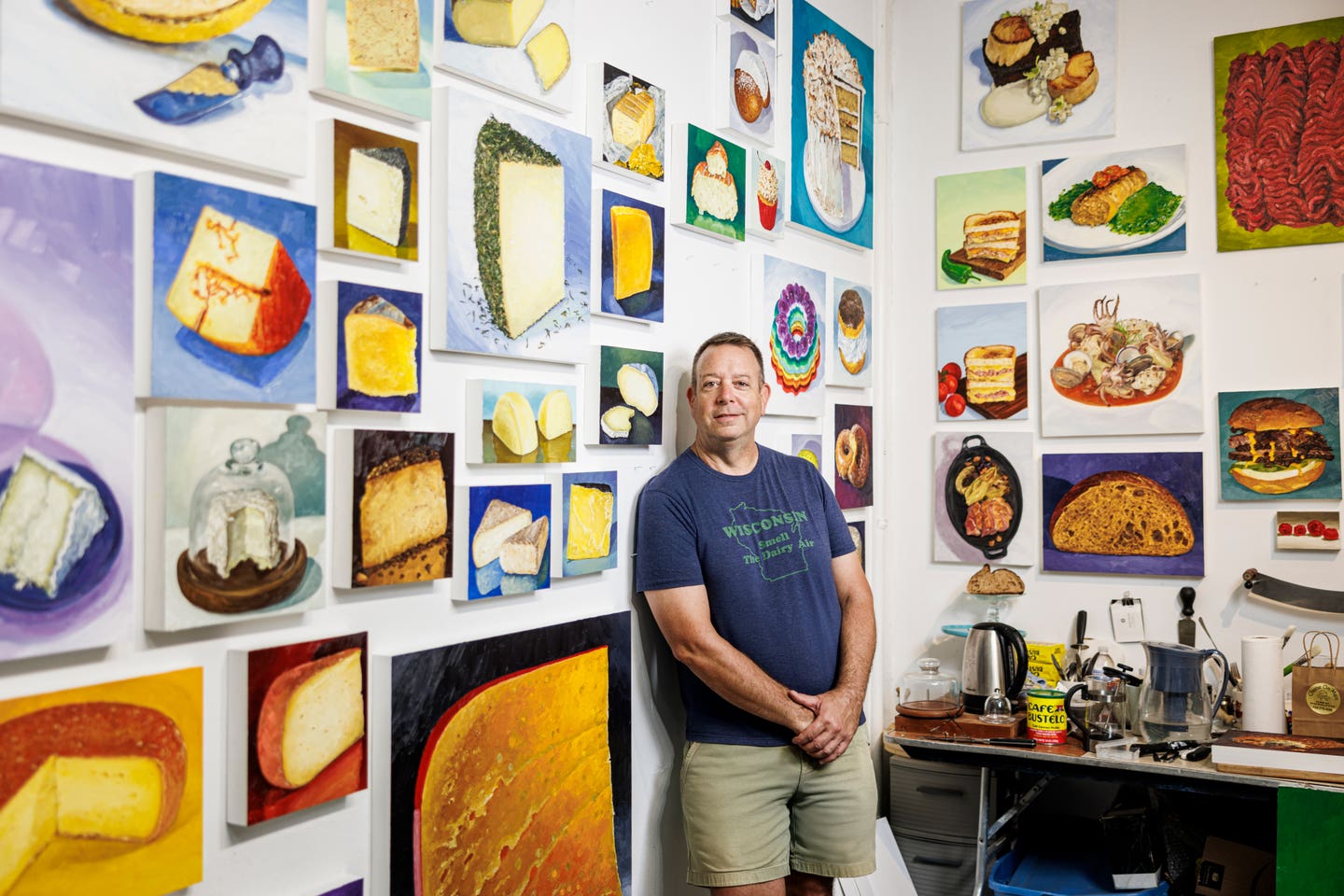
Meet the ‘Cheese Portraitist’ Who Painted Our Back Cover
What it took to turn three Wisconsin cheeses into a timeless piece of art.

Artist Mike Geno is often seen sporting a gray T-shirt printed with the words “Cheese Helps” in black block letters. The line on the shirt—purchased at the late American cheese legend Anne Saxelby’s New York City shop—could mean many things, but for Geno, it’s straightforward: Cheese is his livelihood, just not in the way you might expect. Geno is a cheese painter.
It all started 24 years ago, when Geno was in grad school. On a lark, he painted a porterhouse steak, working quickly to capture the form, color, and texture. Then he ate his subject, because he couldn’t afford not to. He was surprised at how much he loved the challenge of painting perishable food, which pushed him to “work faster, and more intuitively, and not be second guessing [himself], which was really healthy,” he says.
For his 40th birthday, Geno received a $25 gift certificate to Philadelphia cheese haven Di Bruno Bros., where he spent it on a wedge of Gorwydd Caerphilly, a Welsh cheese he had never heard of. “I thought, ‘God, this is too good to eat; I have to paint this,’” he says. The piece inspired a series of single-subject cheese paintings for a May 2011 show and, thanks to subsequent media coverage, Geno sold 30 of them in mere months.
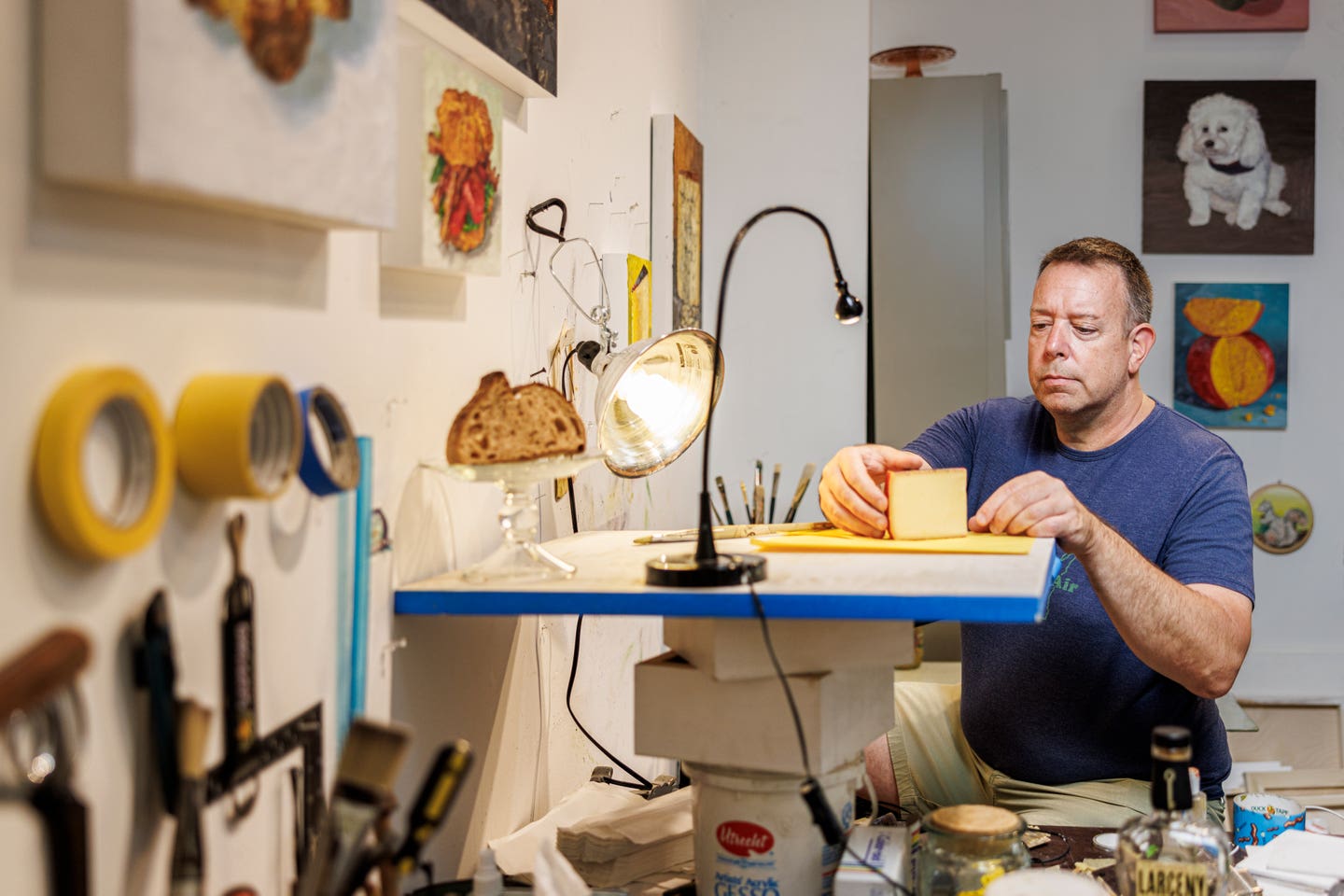
“What I learned about cheese is that its texture is really important … the mouthfeel, the color, the rind,” he says. “I started paying close attention to the details—that’s why I call them portraits. The more I found seductive about my subject, the more I wanted to make sure that was in my painting. I focus on what makes me hungry.”
Geno paints in oil on wood panels, using a studio wall as his easel. The cheese sits close by on a shelf. Timing is critical to catch the color and texture of the cheese at its best, and most of his paintings are completed in six to eight hours. “Then I eat the cheese,” he says.
One of Geno’s early supporters was fellow Philadelphian and cheese educator Tenaya Darlington (aka Madame Fromage), who became a mentor and good friend. “The first time we met over cheese, she said, ‘This is made by a pioneer cheesemaking woman from the West Coast who is not going to make cheese anymore,’ and I’m like, ‘What?’” he says. “Like most Americans, I didn’t know that there’s a story with every cheese.”
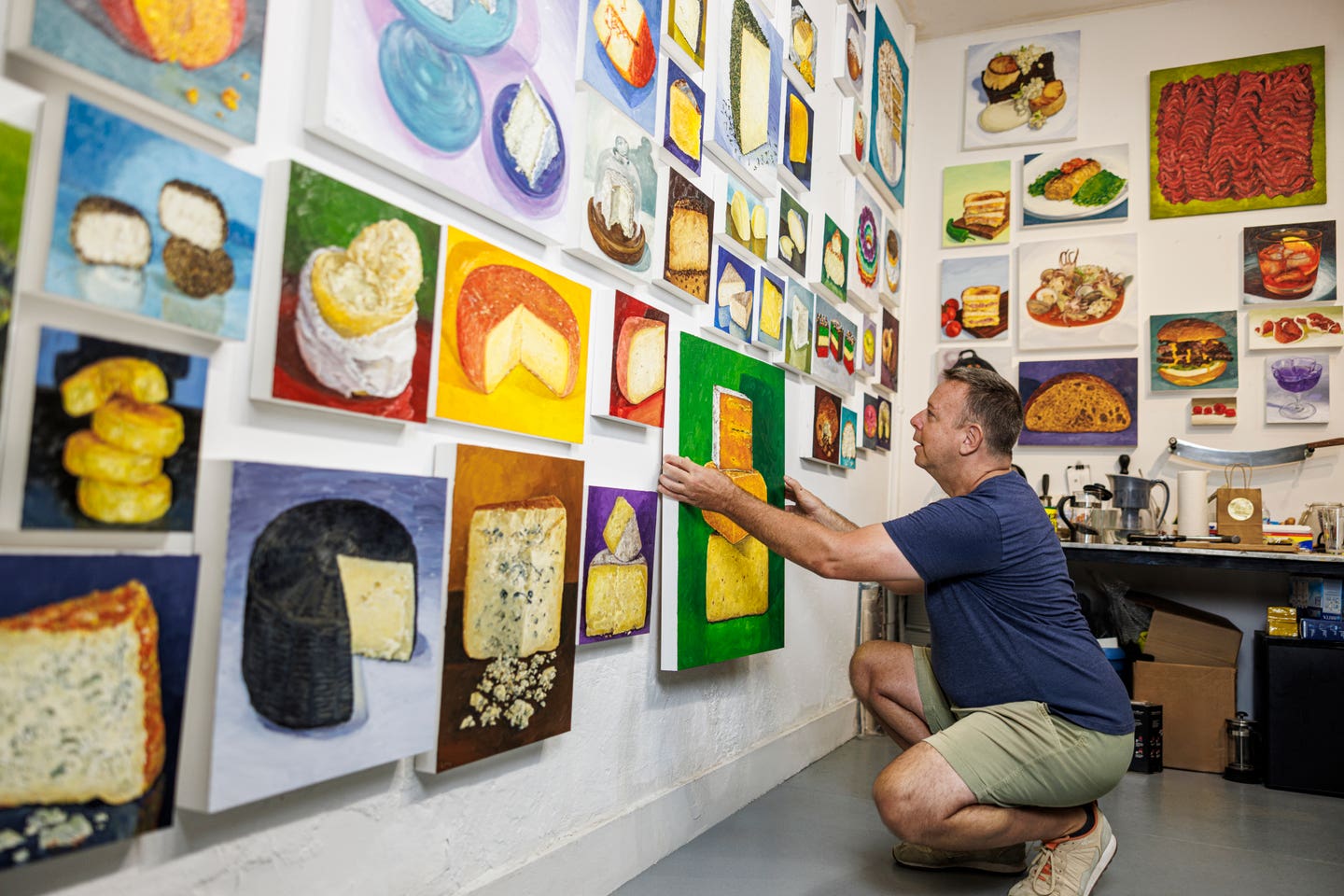
Keen to learn more about what was fast becoming his favorite subject, in the summer of 2012, Geno and his cheese paintings traveled to Raleigh, North Carolina, at the invitation of the American Cheese Society for its annual conference. In the self-described curd nerds—cheesemakers and mongers, suppliers, and writers—Geno found his people. So, when the following year’s conference was held in Madison, he soaked in all he could about Wisconsin cheese.
“To meet makers like Chris Roelli was like meeting rock stars,” says Geno. Since that fateful fest, Geno has painted more than 34 Wisconsin cheeses, including 13 for a calendar commissioned by celebrated maker Emmi Roth. His portfolio also includes Clove Gouda by Dutch-born Marieke Penterman, owner of Marieke Gouda; Evalon, a slightly sweet, nutty, gouda-style cheese from LaClare Creamery; and luscious, juniper-studded Blue Jay from Deer Creek Cheese. His portrait of Carr Valley’s Billy Blue was on his Christmas card one year. Immigrants from Italy, Switzerland, Germany, and Holland brought their cheesemaking traditions to Wisconsin more than 180 years ago. Today, the state’s 1,200 licensed cheesemakers (Wisconsin is the only state that requires makers to be licensed) turn out over 600 varieties, which have won more awards than cheeses from anywhere else in the world. While some are versions of European classics, many others are Wisconsin originals.
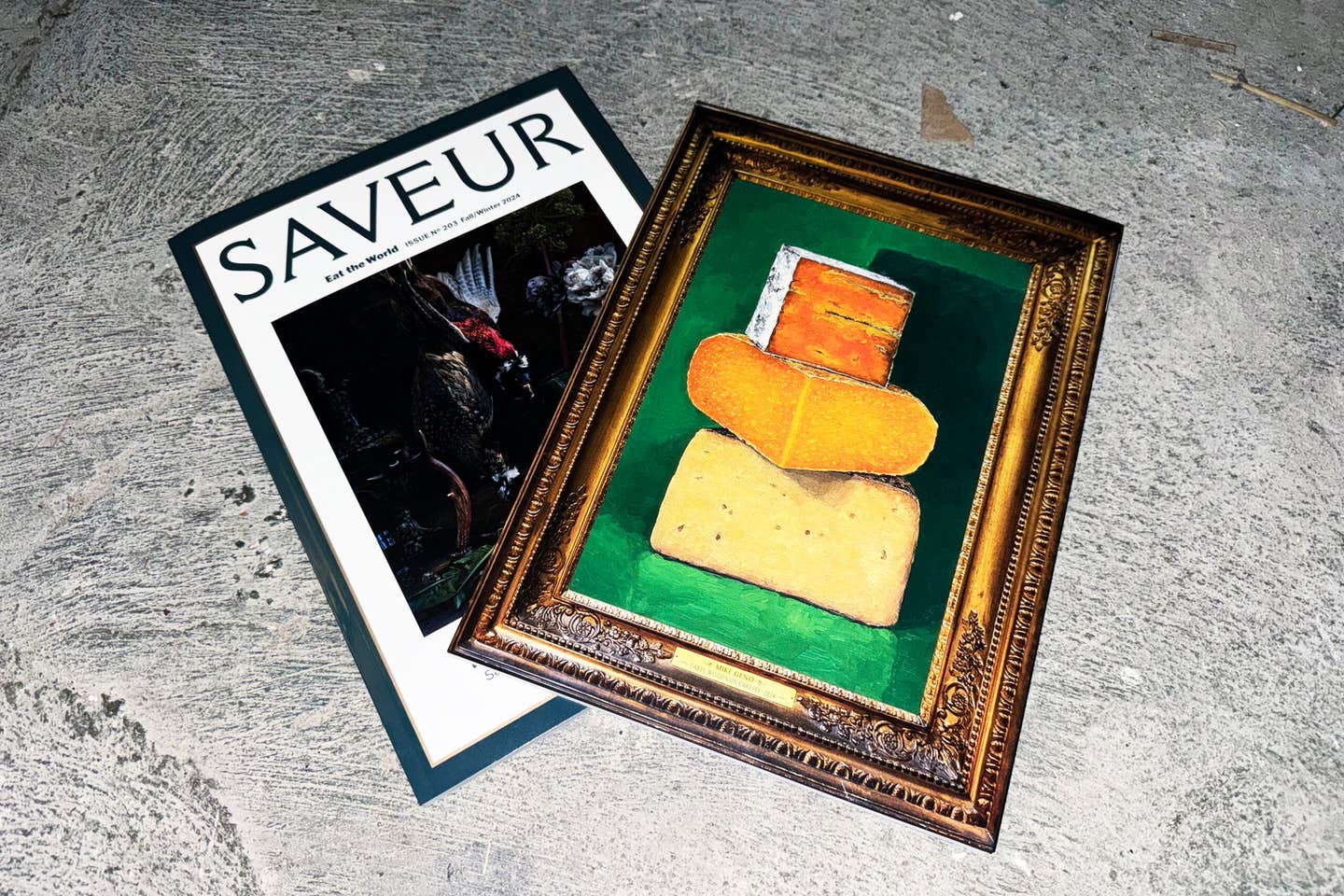
Among the latter are the three cheeses captured in Geno’s painting commissioned for the back cover of this issue: Roelli Cheese’s Red Rock, a mild, blue-veined cheddar with a natural rind; Hill Valley Dairy’s Luna, a cave-aged gouda and Alpine-style blend with caramel notes; and Sartori Cheese’s Black Pepper BellaVitano, a cheddar-parmesan blend hand rubbed with black pepper.
All three are now among Geno’s favorites for snacking, but when it came to painting them as a tower, there was no shortage of challenges. At 24” x 30”, the piece was much larger than his usual portraits, and since his studio isn’t air conditioned, working in early July meant both he and the cheeses were liable to melt. “It was a 12-hour painting day, but luckily the stack didn’t fall over,” he says.
It’s a priority for Geno to pay the “Cheese Helps” concept forward. “I love the idea of my art supporting some other art, so I always try to find out from the maker what they would like me to share,” he says. “It’s how I’ve learned about over 500 cheeses and, unexpectedly, it became a way of teaching others.” He’s quick to say, however, that he doesn’t consider himself a cheese educator. “My goal is to make the painting look so good to a viewer that they want to go out and buy that cheese.”
Keep Reading
Continue to Next Story
